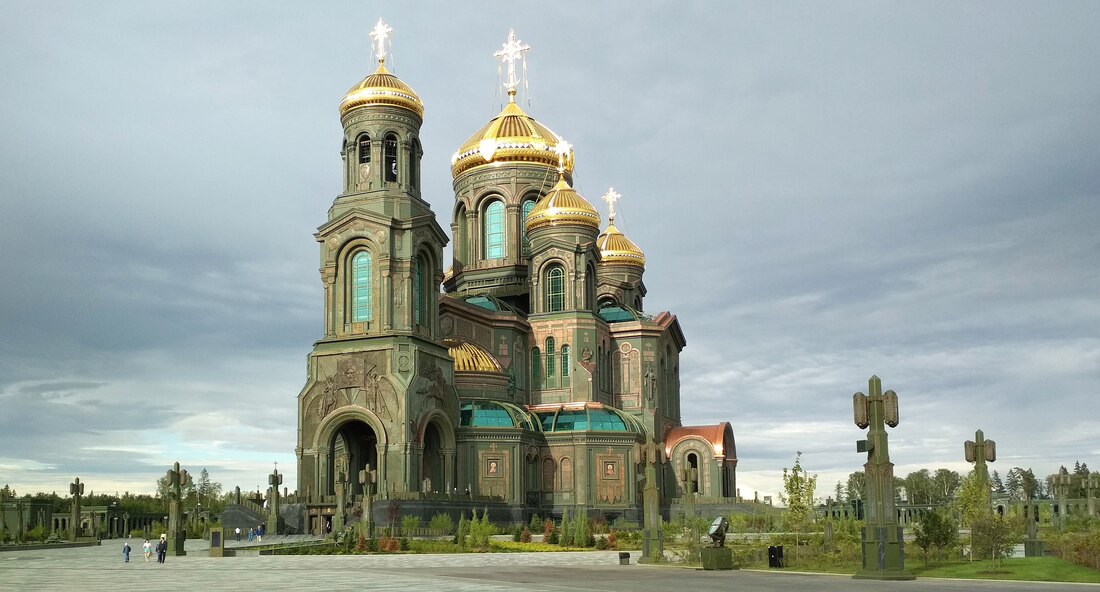|
My blog posts revolve around my interests and vocation as a historian: the intersection of history and contemporary church life, the intersection of history and contemporary politics, serendipitous discoveries in archives or on research trips, publications and research projects, upcoming conferences, and speaking engagements.
I sometimes blog for two other organizations, the Canadian Baptist Historical Society and the Centre for Post-Christendom Studies. The views expressed in these blogs represent the views of the authors, and not necessarily those of any organizations with which they are associated. |
|
https://commons.wikimedia.org/wiki/File:Main_Cathedral_of_the_Russian_Armed_Forces_Patriot.jpg Much is made of the demise of Christendom in Europe. Yet the recent construction of the Cathedral of the Resurrection of Christ in Russia is a reminder that it is simply incorrect to speak of the decline of Christendom in Europe as if all Europe was the same. Europe is far from monochrome, and patterns and practices of church-state relations vary from nation to nation. Take Russia for example. The Soviet communist attempt to de-Christianize Russia was a horrific experience, one where countless priests were tortured and executed, and thousands of churches and monasteries desecrated, destroyed, or taken over by the state. It was a bloody attempt to bring about a post-Christendom Russia. However, the collapse of communism and the Soviet Union in the late 1980s and early 1990s led to a resurgence of Orthodoxy. The repressed faith was once again allowed to blossom and flourish in public, and new buildings such as Cathedral of the Resurrection of Christ are a demonstration of that revitalized faith. As the main cathedal of the military, it celebrates Russian history and honours Russia's war dead. The church itself is gorgeous, with masterful iconography and six domes that tower over the landscape. The centre dome weighs 80 tons! My attempt to describe the beauty of the church will fall flat, so see this video tour of the church for a sense of its wonders. Just as Baroque architecture reflected a powerful and surging Post-Tridentine Catholic Church in the seventeenth century, the ornate Orthodox Church speaks loudly today – Russian Orthodoxy is alive and well in the twenty-first century. Modern day Russian Orthodoxy also enjoys the support of the state in a partnership that seeks to provide stability and national identity. To be Russian is, in many ways, to be Orthodox. And to fight and die for the nation is – in the iconography of the new cathedral – to fight and die for a Christian nation. While one may celebrate the survival of an ancient church, raise questions about the ability of that same church to maintain its prophetic edge in such a cozy relationship with the state, or even wonder about the wisdom of such a close link between the church and military, what one cannot say is that Christendom is dead in Russia. In fact, as the Cathedral of the Resurrection of Christ’s name suggests, rebirths can occur – in this case, a renaissance of Russian Christendom. (Note: This blog was written almost two years before the Russian invasion of Ukraine. I have left the blog text as it was written in 2020, partly because much of the commentary - especially comments about the dangers of the cozy relationship with state - stands the test of time.) ___________ For further reading on post-communist Russian Orthodoxy, see Geoffrey Evans and Ksenia Northmore-Ball, “The Limits of Secularization? The Resurgence of Orthodoxy in Post-Soviet Russia,” Journal for the Scientific Study of Religion 51, 4 (December 2012): 795-808.
1 Comment
|
Archives
May 2024
|

 RSS Feed
RSS Feed
